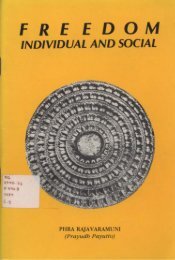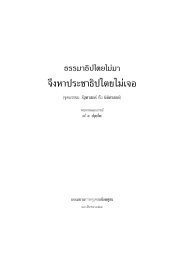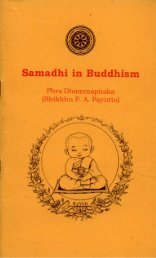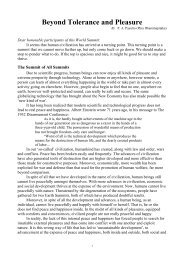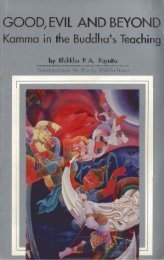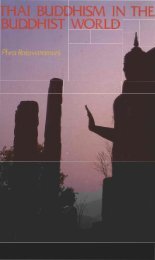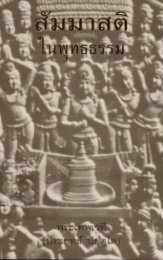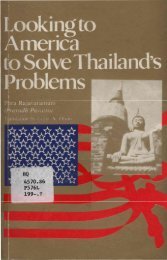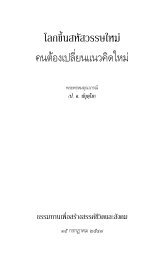The Iconography of Nepalese Buddhism
You also want an ePaper? Increase the reach of your titles
YUMPU automatically turns print PDFs into web optimized ePapers that Google loves.
In Nispannayogavali, Vajradhara is the main deity in<br />
Vajrasattvamandala. He is three faced, six-armed and reddish<br />
white in color. His right arm holds a vajra, a sword and a<br />
kapala and his left hand holds a bell, an ankush and a noose.<br />
He stands in the Ardhaparyanka posture and dances in Tandava<br />
style.<br />
3.2 Vajrasattva<br />
Vajrasattva is also regarded as Adi-Buddha by <strong>Nepalese</strong> Vajracharyas<br />
who follow Vajrayana tradition according to the text<br />
Vajrasattvakaya. His body is white with one face and two<br />
hands. His right hand holds a five pronged golden vajra at his<br />
heart. His left hand holds a silver bell at his side. He sits in the<br />
Vajraparyanka posture wearing precious silks and ornaments<br />
with jewel diadem. His body is adorned with 32 major and 80<br />
minor marks <strong>of</strong> a Sambhogakaya and emits a clear limitless<br />
light. It appears to lack all notion <strong>of</strong> substantiality, like the<br />
reflection <strong>of</strong> moon in water.<br />
Vajrasattva has father-mother aspect too. Generally this<br />
form is not exhibited in open. It is shown only to those who<br />
are initiated in Highest Yoga Tantra. His form is the same as<br />
in the single one but his consort carries a kartri in her right<br />
hand and a kapala in her left hand.<br />
Vajrasattva is said to have been originated from seed syllable<br />
um and is generally invoked for removal <strong>of</strong> obscuration<br />
<strong>of</strong> Kleshavarana and Jneyavarana. His hundred syllable man-<br />
47



